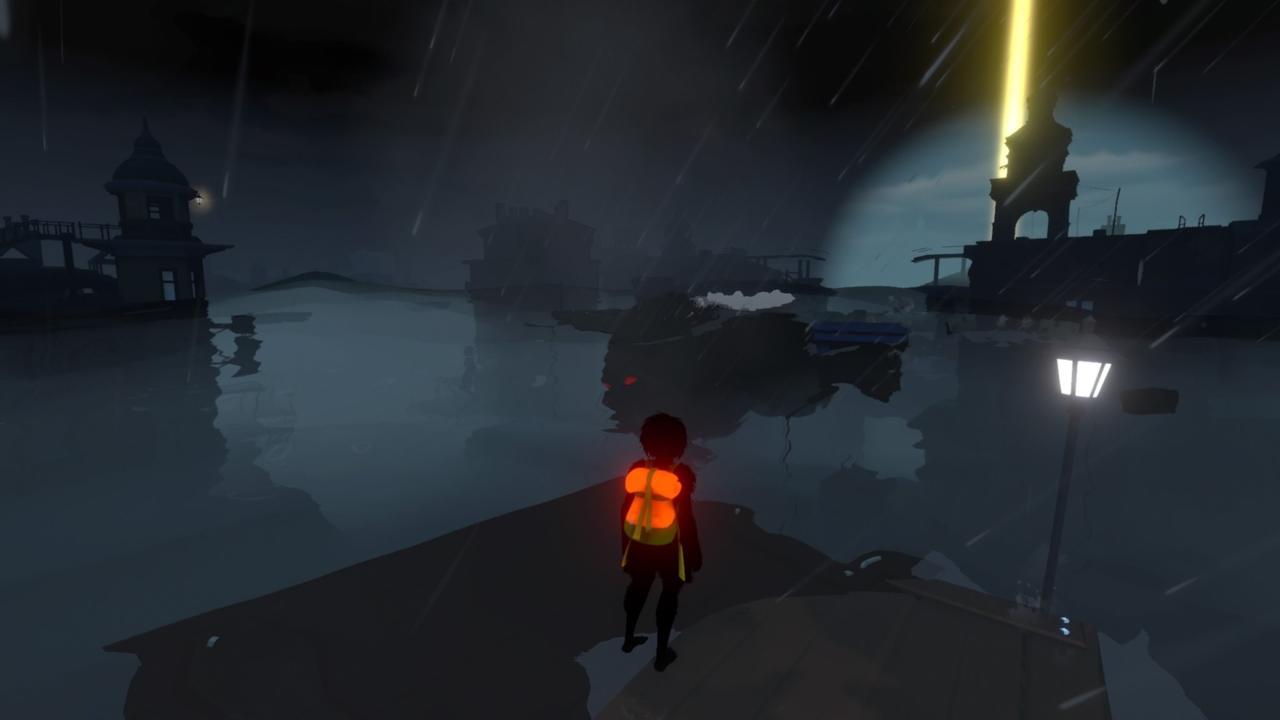Loneliness exists on a broad spectrum that isn't always synonymous with simply being alone. It's a state of mind, an overwhelming feeling of isolation that can still affect a person even if they're surrounded by loved ones and friends. Sea of Solitude understands this all too well. Its opening cutscene begins with a poignant musing: "I have family. I have friends... And yet here I am, feeling lonely. Again." Sea of Solitude is a game about loneliness that's very personal for the 12-strong team at German developer Jo-Mei Games, and it shows. It tackles the subject matter with a deft touch, exploring the myriad ways these feelings of isolation, sadness, and anger can impact people's lives in a refreshingly authentic way, using the backdrop of a puzzle-platformer to tell its story.

You play as Kay, a young woman who inhabits a world where lonely people are transformed into monsters. Kay is a monster herself, so she's desperately trying to find out why this happened and how can she can return to her human form. The rest of the narrative spirals out from this core concept, forcing Kay to confront her past and her relationships with the people around her. Loneliness affects different people in different ways; a lonely child who's struggling to make friends at school has different needs than someone going through a breakup or someone who's just moved to another country where they don't know anyone, for example. Sea of Solitude shines an introspective light on the various ways loneliness can affect people, doing so through Kay's interactions with other characters and the monsters that reside in this world, whether they're antagonistic or seeking help.
The voice acting in these moments is uneven amongst the small cast of characters, however, the consistent writing is a strong point throughout. Conversations feel very raw and are oftentimes uncomfortable, yet Sea of Solitude manages to sprinkle in moments of levity to offset the otherwise bleak subject matter. The ending lacks closure in a very realistic and human way, but the story's profound throughline of self-discovery and healing naturally reaches an empowering conclusion.
The story's profound throughline of self-discovery and healing naturally reaches an empowering conclusion
Each aspect of Sea of Solitude has some kind of underlying meaning, and these are frequently conveyed through the use of both literal and figurative metaphors. The sea is one of the more blatant allegories at its disposal, as the entirety of the game takes place upon the undulating waves of a flooded city. Being alone on a small boat is inherently isolating; you just have to imagine the terrifying feeling of being marooned or adrift at sea, far away from civilization in an unpredictable environment that can deviate from being calm to violent at the drop of a hat. Kay uses this small vessel to traverse the flooded streets of the Berlin-inspired city, utilizing some basic platforming to get around when on dry land. Her interactions with the various monsters that populate the city are the catalyst for everything that follows. There's a familiarity to each monster's design, with the vast majority of them being reminiscent of specific animals, albeit in a fantastical way. Each one shares a mutual feature in the form of jet black fur and unsettling red eyes, but they're often human at their core, transformed into monsters due to their disparate struggles with loneliness and anguish.
You spend much of the game coaxing the human side out of these ghoulish beasts by confronting Kay's own past and dispelling the corruption that's seeped into the city. Corrupted areas are bleak and coated in muted shades of grey and black, with the night sky lashed by swirling winds and torrential rain. Removing the corruption in an area by finding and inhaling it into Kay's backpack introduces light to the world, revealing the incandescent vitality of the sun and turning the sea as blue as the sky. The stark contrast between night and day accentuates the daytime's beauty, while the painterly art style--not to mention the nautical theme--can't help but bring to mind the vivid aesthetic of The Legend of Zelda: Wind Waker. It's in these moments that the "Solitude" of the game's title is captured, presenting the positive side of being alone.
Dispersing the corruption is a task fraught with danger, however, and not just for Kay's mental well-being. Some of the monsters are aggressive and will attack on sight. Death isn't really an obstacle, as you're immediately placed back right where you left off, but Sea of Solitude does manage to wring moments of tension out of these interactions. The problem is that, despite a brief three-hour playtime, it introduces new mechanics every few chapters and then drags them out until they're nothing short of monotonous. There are numerous occasions where you have to lure spectral children into light by running close enough to aggro them, for lack of a better term, before dashing away. It's all relatively straightforward, which isn't a bad thing on its own, but the act of playing Sea of Solitude is never particularly engaging and mostly consists of dull mechanics that far outstay their welcome.
The story, and the way it confronts a universal but often misunderstood part of life, is Sea of Solitude's biggest draw. The gameplay is passable at best and tedious at its worst, but this is still a journey worth experiencing because of the way Jo-Mei Games has managed to weave a heartbreaking tale out of genuine characters and believable grief. Kay wants to know why she turned into a monster, and this is the driving force behind the whole game. What could have triggered it and why are these monsters so intrinsically linked? Despite some missteps along the way, Sea of Solitude is difficult to put down until you can answer those questions for yourself.









